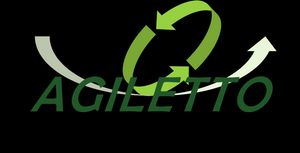What to Do When Your Team Says They Do Not Need a Daily Standup
Introduction
"Why are we even having these meetings?" Paula asked, addressing the elephant in the room. Some team members stared down at the floor, shifting uncomfortably. John, usually the most vocal in the group and a strong advocate for processes, seemed lost for words. He looked at me, clearly frustrated. "Do something," he said. "We need to have daily stand-up meetings because..." He hesitated, then added, "It says so in the Scrum Guide!"
This was, as any coach would say, a critical moment. As a Scrum Master, I knew I had to navigate this situation carefully. I could either lose the team's trust or help them overcome this hurdle and take a crucial step forward in their Agile journey, advancing through the Wheelan stages of team development. But if I handled this poorly, the team might stagnate or even regress. These thoughts flashed through my mind, and I felt a wave of dizziness. This was a defining moment—not just for me as a Scrum Master, but for the team as a whole.

The scenario above is fictitious, yet it mirrors countless real-life situations where teams push back against their Scrum Master on specific practices—often targeting the Daily Scrum or Daily Stand-up. This 15-minute meeting, designed for planning the day and synchronizing activities, frequently becomes the scapegoat for all Agile frustrations. It can also be a key indicator of a team’s Agile maturity. In this article, I’ll share strategies to address this challenge. If you're ready to find solutions, keep reading! So, let's do it!
The Stand-Up
The daily stand-up is a cornerstone of Agile practices, intended to foster alignment, communication, and rapid problem-solving within teams. But what should you do when your team claims they no longer need daily stand-ups? This is a common scenario that many Scrum Masters and Agile coaches encounter, and how you respond can significantly impact your team's effectiveness and cohesion.
If there’s one meeting you should strive to keep and evolve, regardless of whether you’re using Scrum, Kanban, or any other Agile method or framework, it’s a daily collaboration meeting, whether you call it a stand-up or something else.
Possible Reasons for Rejection
As I wrote in my article about the 9 Daily Stand-Up Myths Busted, there are several misconceptions about this crucial meeting that might hinder the team. The list of myths in that article, along with the do's and don’ts, might give you clues about possible reasons for rejection. However, as a Scrum Master, your role isn’t to judge the team but to coach them into improving their daily stand-up meeting. It’s important to understand the team’s dynamics and maturity level.
Team Maturity
Understanding the team’s maturity is key. A group of individuals merely working on their own tasks isn’t really functioning as a team. In such cases, the solution might be to foster more collaboration. Techniques like pair programming or limiting the Work in Progress (WIP) can encourage team members to work together more closely. Conversely, if the team is highly mature and well on its way to becoming a high-performing unit, the meeting might have lost its effectiveness or become a status report rather than a collaborative, problem-solving session. In such cases, consider changing the format or even temporarily removing the Scrum Master and/or the Product Owner from the meeting.
For example, I once visited a team that didn’t discuss issues with each other, instead turning to the Scrum Master for direction. To encourage more collaboration, I suggested, in a coaching session, that the Scrum Master start the meeting and then step aside, pretending to take a phone call or something. Standing by with a silent phone, the Scrum Master listened as the team began to discuss, plan, and solve problems together.
Understanding the Root Cause
As a Scrum Master, it’s crucial to facilitate the team in solving this problem themselves. This can be done in a separate meeting or, even better, at the next planned retrospective.
Listen to the Team
Begin by listening to the team. Conduct an exercise or simply ask them to write down their thoughts on sticky notes to get the conversation started. The prompt could be, “What are the problems with our daily stand-up meeting?”
But don’t linger too long in the problem space, because what you focus on is what grows. Instead, swiftly transition to finding solutions.
Create a Vision and a Purpose
One common issue is that the team may not have a clear purpose for the meeting. Even if they do, it might be time to redefine or reiterate that purpose. Ask the team why they need a stand-up meeting, or why it is part of all Agile methodologies. What is its purpose? What is the outcome of a good meeting?
Once a shared purpose is established, work on creating a vision. Ask the team to imagine the ideal stand-up meeting. What would happen? How would they feel afterward? A useful technique here is “The Worst Meeting Ever.” Have the team imagine the worst possible meeting and describe it. Then, flip those statements to define what the best possible meeting would look like.
Take the Next Step: Experiment
Ask the team, “What is our first step toward achieving this vision? What can we do as early as tomorrow?” The experiment could involve setting ground rules for the meeting, reducing the Scrum Master’s role, or trying a new agenda or meeting time. Just remember that it is the team that shall define the experiment.
But don’t stop there. Have the team define the expected outcome of their next step. What will happen? How will they know it has happened? Can it be measured?
This approach treats changes as experiments. The team formulates a hypothesis (e.g., “We think the meetings will be better if we…”) and an expected outcome (“We will feel more engaged when…”). Like any experiment, it must be evaluated and adjusted as needed. Use the next retrospective or sooner to assess whether the team is on the right track. This is the basis of any empirical way of working, like Agile.
Conclusion
When your team pushes back against the daily stand-up, responding with thoughtfulness and adaptability is essential. The daily collaboration meeting, whether you call it a stand-up or something else, plays a crucial role in Agile success. However, it’s not just about keeping the meeting—it’s about ensuring it serves its true purpose of fostering alignment, communication, and collaboration.
What to Do When Your Team Says They Don’t Need a Daily Standup
Listen and Understand
Begin by genuinely listening to the team’s concerns. Understand why they feel the daily stand-up is unnecessary. Is it because the meeting has lost its purpose, become a status update, or feels like a redundant routine? Getting to the root of their concerns is the first step in addressing the issue.Reframe the Purpose
Often, the issue isn’t the stand-up itself but how it’s conducted. If it has become a rigid ritual, consider shifting the focus to problem-solving, planning, and forward-looking discussions. Refer back to the insights from the 9 Daily Stand-Up Myths Busted article for ways to refresh and refocus the meeting.Envision a Perfect Meeting
Work with the team to create a vision for an ideal stand-up meeting. Encourage them to include not just logistical details but also how they want the meeting to feel. Questions like "How will it feel when we have the perfect stand-up?" can help surface important soft factors that contribute to a successful meeting.Experiment and Adapt
Be open to experimenting with different formats and improvements if the traditional stand-up isn’t working. Could the meeting be held at a different time, or with a new structure? The key is to maintain regular communication and alignment within the team. Continuously evaluate, adjust, and adapt all changes.Encourage Team Ownership
Empower the team to take ownership of the stand-up. The meeting should not feel like an obligation imposed by the Scrum Master or Product Owner but rather a tool the team values for staying aligned and addressing challenges together. When the team takes ownership, the meeting becomes more meaningful and effective.
The Essential Takeaway
The team's Agile maturity and development stage are often reflected in their approach to stand-up meetings. If they see and use stand-up meetings to enhance collaboration, identify and solve problems, and align their efforts toward their common goal, they are likely well along the path of Agile maturity. On the other hand, if they oppose the daily stand-up, they might be resisting Agile practices altogether, seeing the stand-up as just another process step rather than a vital part of team collaboration.
The core message of this article is simple: while the format and frequency of daily stand-ups can and should evolve with the team’s maturity, the need for regular, structured collaboration remains essential. By listening to your team, adapting the stand-up format, and reinforcing its purpose, you can ensure this practice continues to add value and drive your team’s success.
Ultimately, the daily stand-up—or whatever form your team’s daily collaboration takes—should be a time for alignment, problem-solving, and collective planning. It’s not about rigidly following a process but about fostering the communication and collaboration that are vital to any Agile team’s success. Keep this principle at the heart of your Agile practices, and you’ll help your team move forward with confidence and clarity.
What are your thoughts?
Last updated May 27, 2025
